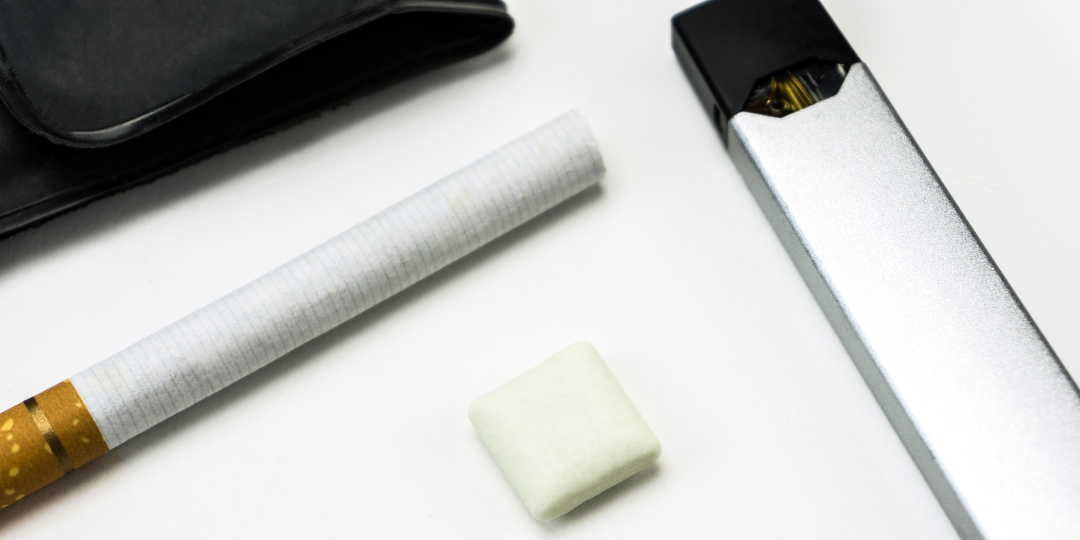
NICOTINE REPLACEMENT THERAPY - SWITCH TO A SMOKE-FREE LIFESTYLE
Share
There is no doubt that nicotine is a highly addictive substance, and when a person smokes tobacco, many parts of the body get used to having nicotine in them. When first quitting, the body goes into withdrawal, making the quitting process challenging to manage with willpower alone. While there are various approaches to help make the switch to a smoke-free lifestyle, Nicotine Replacement Therapy (NRT) aims to reduce the cravings and withdrawal symptoms that occur when you stop smoking. Appropriately used, NRT can make a big difference in helping you quit successfully.
What is Nicotine Replacement Therapy, and how does it work?
Other than the addiction to the habit of smoking, cigarettes lead to actual physical dependence, which is why most quitting attempts fail. However, nicotine replacement therapy (NRT) can be an effective approach to quitting smoking by providing former smokers with a controlled dose of nicotine without the harmful chemicals contained in cigarettes. These methods allow people to break the smoking habits first and then gradually wean off the nicotine completely. Many studies have shown that using NRT can nearly double the chances of quitting smoking.
What are the most common NRT available?
NRTs come in different forms, available over the counter or with a prescription. By choosing the Nicotine Replacement therapy that best suits your lifestyle, you can relieve some of the physical withdrawal symptoms to focus on the psychological and emotional aspects of quitting.
Types of nicotine replacement therapy
- Patches
- Gum
- Oral sprays
- Lozenges or tablets
- Inhalers
- Vapes and e-cigarettes
1. Nicotine patches
Over the counter
Patches can be bought with or without a prescription. This form of NRT gives a measured dose of nicotine through the skin so that you can wean off nicotine by switching to lower-dose patches over the course of weeks.
2. Nicotine gum
Over the counter
Nicotine gum is a fast-acting form of replacement that can be bought without a prescription at local pharmacies or supermarkets. While looking like regular gums, they are not used in the same way. Instead, after the initial chewing, the gum is parked under the tongue (or between your gum and cheek) until the tingling stops before you start chewing again. The nicotine released by the gum is absorbed through the mucous membrane of the mouth.
3. Nicotine nasal spray
Prescription
Nicotine nasal spray is only available by prescription. This NRT has a rapid action as it delivers nicotine absorbed through the nose directly into the bloodstream. It relieves withdrawal symptoms quickly and helps control your nicotine cravings.
4. Lozenges or tablets
Over the counter
Unlike gums, lozenges are taken when the craving occurs and rolls around the mouth until they dissolve. The nicotine is absorbed through the mouth and slowly released into your body, helping manage cravings.
5. Nicotine inhalers
Prescription
The nicotine inhaler is a thin plastic tube with a nicotine cartridge inside. Unlike other inhalers, which deliver most of the medicine to the lungs, the nicotine inhaler has most of the nicotine absorbed into the bloodstream through the mouth and throat. Nicotine inhalers are the FDA-approved nicotine replacement method with a similar feel to smoking a cigarette, which some people trying to quit find helpful.
6. Vapes and e-cigarettes
Prescription + vaping kits
Vaping is the NRT most similar to smoking which some people find beneficial at the beginning of their quit smoking journey. By mimicking some of the cigarettes' behavioural, social, and pharmacological aspects, vaping represents a new treatment for cigarette addiction. From 1 October 2021, all nicotine vaping products, such as nicotine e-cigarettes, nicotine pods and liquid nicotine, are classified as prescription medicines and therefore only obtainable with a prescription. While there are still few studies regarding possible longer-term effects of vaping, experts generally agree that e-cigarettes are considerably less harmful than smoking, even though they are not entirely risk-free.
Vaping is considered a second-line treatment for quitting smoking, meaning it is only encouraged when other cessation methods have failed. Once the prescription is approved by an authorised prescriber, people can purchase their devices and flavoured nicotine-free juice from Australian vape shops or import premix Eliquid from overseas under the Personal Importation Scheme.
Getting the most from nicotine replacement therapy
Nicotine replacement therapy primarily addresses the physical dependence caused by nicotine. However, to successfully quit smoking once and for all, it's essential to address the psychological, emotional, and mental aspects of smoking cigarettes with a quitting plan and expert advice. Relying on a support system during treatment with NRT for at least a few months after you quit can make a real difference in managing triggers and adapting to the new smoke-free lifestyle. Studies have shown that pairing NRT with a program helps change behaviour and can improve your chances of quitting and staying quit.
